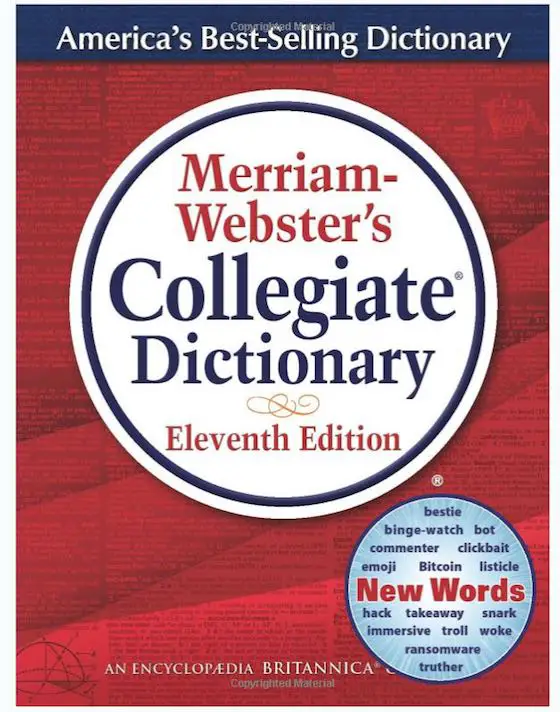
CLICK or TAP HERE to order this important book.
Hard Copy Dictionary - Get One NOW!
It just makes sense to have a real hard copy and that way the definition of a word can't change on you.

CLICK or TAP HERE to order this important book.
It just makes sense to have a real hard copy and that way the definition of a word can't change on you.
This is a great scene from the TV series Chernobyl. Watch ALL the clips to get the full context.
This first one is only seven seconds and has the classic script line:
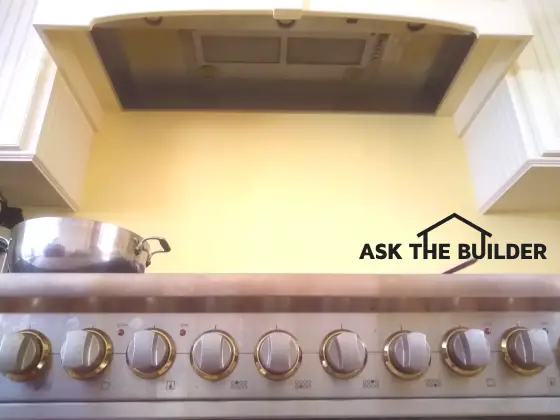
Grease Dripping From Range Hood | This is a powerful kitchen stove range hood that exhausts air outdoors. Many problems can happen if you don’t operate one correctly. The column below was so good I shared it with 31,000 subscribers in my FREE December 13, 2020 newsletter. Copyright 2020 Tim Carter
"It’s important for this water vapor to be piped out of your house as rapidly as possible before it changes back to liquid water."
QUESTION: Tim, my husband and I really need your help. Our ten-year-old multi-speed kitchen exhaust fan drips greasy water back down onto the stove. Three of the highest fan speeds no longer work. The lights in the hood have also stopped working. It’s in a custom wood surround with a custom internal stainless steel frame so buying a different model will become an installation nightmare. I’m worried the fan is a lemon and don’t want a new one to fail like this one. I can tell you that years ago the highest speeds of the fan were so loud that you couldn’t hear in the kitchen, so I almost always used the lowest speed. What’s going on and how would you solve this problem? Did I inadvertently cause the problem? Monica B., Lexington, KY
I don’t know about you, but I’ve got a very similar kitchen stove exhaust fan like Monica’s. In fact, I had one at my last home that I thought was so powerful it would suck an infant up into the air. It sounded like a jet engine. The interesting thing is after years of use, I never had one drop of greasy water drip from my hood like Monica.
I solved Monica’s problem over the phone in less than fifteen minutes. I’ve offered this one-on-one problem-solving service for years because some problems are so complex you just can’t do it with back-and-forth emails. After hanging up with Monica, I felt it was important for you to know what went wrong. I don’t want the same thing to happen to you forcing you to buy a $1,000 exhaust fan when it could have been avoided.
When you cook on a stove, your high school chemistry and physics teachers are grinning up in Heaven. Remember when you sat in class all those years ago mumbling under your breath, “How am I EVER going to use this useless information?” I have to admit, I’d sometimes say it out loud and I got to ponder the answer that afternoon sitting in detention class for 45 minutes copying my high school rule book on lined notebook paper.
The cooking process creates vast amounts of water vapor as you heat food and boil water. When you heat up or fry meat, you also melt grease and some of this also gets converted to vapor, or tiny droplets of the grease hitch a ride on some of the water vapor as it floats up from your stove.
It’s important for this water vapor to be piped out of your house as rapidly as possible before it changes back to liquid water. This is why exhaust fan manufacturers have very explicit requirements as to both the minimum diameter and maximum length of the exhaust pipe that connects your fan to the outdoors.
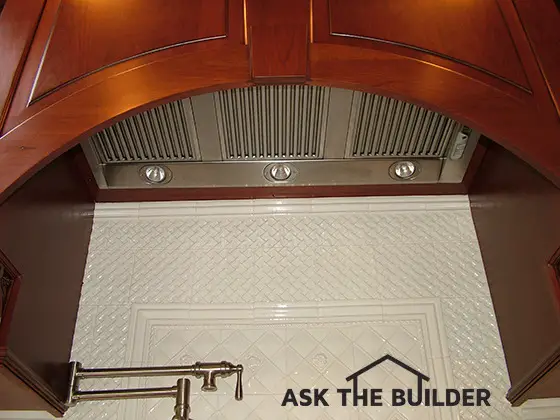
You should match your kitchen exhaust fan speed to the amount of food on the stove that's cooking. More food and boiling water means higher fan speeds.
You should now understand why most of these high-quality exhaust fans have high-speed fans. The fan is trying to blast the water vapor outdoors in just a few seconds as opposed to allowing it to saunter through the exhaust pipe on its journey to the great outdoors.
The dripping greasy water problem is exacerbated by cool or cold weather. Monica absolutely can experience this in central Kentucky. I lived for fifty-five years just 90 miles north in Cincinnati, OH, and I know how bitter cold the Midwest can get in the winter months. This is why it’s a good idea to insulate both kitchen and bathroom exhaust pipes so they stay as warm as possible.
Remember in your physics class when your teacher discussed condensation? If you live in a humid climate, you undoubtedly experience this in the summer. Think about that cold can of beer or soda you take from the refrigerator and place on your patio table. It’s dry when you take it from the refrigerator but on a humid day within a minute a fog on the cold metal. Minutes later, a small puddle of water has developed at the base of the can!
Now imagine the enormous surface area of your kitchen fan’s exhaust pipe. It could be fifty or one hundred times the surface area of a single can of soda. It should start to make sense to you now why greasy water is raining down from Monica’s vent hood.
Vent hood filters should be cleaned frequently.
Monica also asked me on the phone about how often to clean the filters in the vent hood. I asked her how often she cooks and she said every night. Fortunately, her filters are a mesh stainless steel and can be put in the dishwasher. I suggested she clean them every two weeks at a minimum.
I then discussed with Monica why there are often four speeds to kitchen exhaust fans. It’s important for you to match the fan speed to the amount of food being cooked on the stove. If you’ve got all the burners going, pots of water boiling, skillets frying, etc., you better have the fan on high speed. If you’ve got just one small pot simmering, then the low speed is usually just fine. Match the fan speed to the amount of water vapor being created.
Monica also admitted making another mistake when I asked her how long she allows the fan to run after the burners are turned off. “Oh, I turn off the fan immediately.” That’s a mistake. Some high-quality exhaust fans come with a built-in timer that keeps the fan running for five, ten, or even fifteen minutes after you’re finished cooking.
This is done so any light condensation on the inside of the exhaust pipe can evaporate and be blown outside before it has a chance to drip back down to the kitchen. Monica’s going to get the same replacement vent hood, but this time it’s probably going to last twenty-five years!
Column 1383
Here's your mid-week dose of recently revised columns.
There are some jaw-dropping videos in several.
Once again, I URGE you to, at the VERY LEAST, click and just scan the columns.
This way, when you eventually do have the problem your tiny gray cells will remind you that I have life preservers to throw at you from AsktheBuilder.com!
I can also throw you chocolate-covered doughnuts! Yummy!!!
Remember, are you doing Christmas Shopping at Amazon?
CLICK or TAP HERE to use my affiliate link. It's so easy and it costs you zilch.
"Tim, WHY do you want me to use your affiliate link? What's in it for ME?"
You using the affiliate link helps keep the lights on here at AsktheBuilder.com. It helps pay the server fees. It allows you to get FREE CONTENT.
Those are just a few of the reasons.
Here's another reminder for you.
I have a LINK TO AMAZON in EVERY ISSUE of this newsletter. See it to the right? (Editor: It's to the right in the emailed Newsletter. It is shown below here.) It's this ad:

So SAVE a few issues of this newsletter in your email program and just before going to Amazon, open up an issue, locate the ad, and CLICK the ad for goodness sake.
Top Tips for Long-Lasting Concrete
Change Orders - Death on a Stick!
Have you ever thought about why magenta is such an attractive color?
I'll be back on Sunday with lots of goodies for you.
Tim Carter
Founder - www.AsktheBuilder.com
BEST Darned Organic Cleaner - www.StainSolver.com
Scary 60 Meters - www.W3ATB.com
Do It Right, Not Over!
I’m quite certain you’re a new subscriber who joined us this week. Welcome! Each day I’m able to see all new subscribers and it warms my heart that you trust me to share useful home improvement information. This issue has quite a few fun prizes. Be sure to pay close attention to the Tony Hseih story below.
You, on the other hand, might remember the column I wrote about insulation installation. I’m talking about the one where a contractor admitted to installing it WRONG each day of his entire career. OUCH!
CLICK or TAP HERE to read this fascinating story.
This is a SPY CAMERA for your house or office. It's masquerading as a common USB charger that actually works!!!!
This is a dandy thing to have to catch all sorts of nefarious activity inside your home or office without the evildoers knowing you're recording.
CLICK or TAP HERE to discover how to start your CIA training.
Each week I get at least three emails from subscribers asking me if I'm still alive or sick. Here's a typical one. It came from John overnight:
"I don’t receive newsletters from you anymore. Don’t know if I was dropped from your list or if there’s a different problem. Sincerely hope all is well with you."
I've been publishing this newsletter each week, sometimes twice a week, for years now.
Do you want to make sure it shows up each time in your INBOX? Then do these three simple things:
1. OPEN each issue. Don't look at it in the preview screen of your software.
2. CLICK at LEAST TWO LINKS in each newsletter - Seriously, this is IMPORTANT.
3. CLICK HERE and READ this great article from my friend Leo who's an email EXPERT. He shares all the cool tips about what you need to do to keep getting important email.
While you're reading Leo's article, I URGE YOU TO SIGN UP for his helpful newsletter. He can solve just about ANY tech issue you may have with your computer. You'll discover one of Leo's pet peeves is backing up data.
Leo's a tech jeanyus! 🙂
When you’re shopping for Christmas gifts at Amazon.com, you can help make sure this newsletter CONTINUES to arrive in your Inbox. How, you might ask?

Please use my affiliate link to do your shopping. I get a tiny piece of each sale for brokering the deal. It doesn’t cost you anything. Jeff Bezos just ends up with less money to buy fuel for his huge private jet.
Consider this. A cubic foot of water weighs 62.4 pounds. Visualize water pouring out the end of your garden hose as if it’s a small clear freight train chugging down a track.
What happens when you shut off a valve FAST, like your dishwasher or washing machine fill valve? That freight train of water crashes against the valve. BOOM! CRASH!
How do you STOP the resulting water hammer?
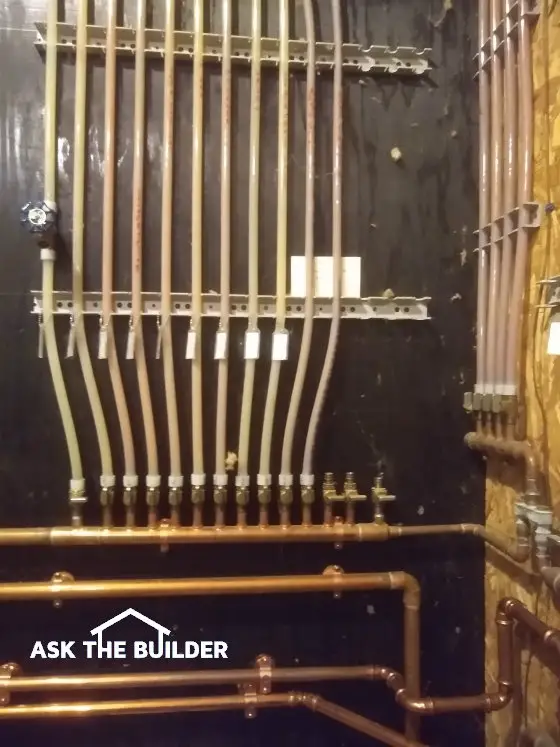
It’s not hard. CLICK or TAP HERE to see what I’d do if I came over to your home with my tools. You did invite me, right?
Did you see the news story about the tragic death of Tony Hseih the week before Thanksgiving? You may not be familiar with Tony, but there’s a great chance you bought something from him. He was the founder of Zappos.
As we all know, you can’t trust what you read or see in the news today - I say this and I’m a member of the working media! I don’t have the exact details or autopsy report of what caused his death and even if they were in a news report, I’d want to read the coroner's autopsy report myself.
But I can speculate because my anesthesiologist father-in-law helped treat many of the survivors of the historic 1977 Beverly Hills Supper Club fire.
Here are just a few of the victims in the temporary morgue that was set up in the Ft. Thomas, KY Armory that fateful night.

The 165 souls who perished in that horrific fire died of smoke inhalation. But it wasn’t just any smoke.
It was highly toxic smoke generated by burning plastic and synthetic materials.
You have countless things in your home that will create this same poisonous deadly smoke as soon as they start to burn.
My father-in-law worked 36 hours straight in the ICU treating people whose lungs were permanently damaged from this fire. He shared that the people who perished took one, maybe two, breaths of the thick black smoke saturated with toxic chemicals and died instantly.
My guess is Tony died from the exact same thing.
Why should this be important to you? I maintain that Tony is screaming at you from up in Heaven right now that you need to be hyper-aware of fire safety in your home.
You need to make sure you have great smoke detectors that are NOT worn out and have lost their early-detection capability. Yes, smoke detectors SHOULD BE switched out every few years. CLICK or TAP HERE to see ones that I prefer.
You need to have an ESCAPE plan that gets you out a window, and not running through a smoke-filled house to get to a door. Remember, one or two breaths and you could be in a body bag.
When traveling, you need to know how to quickly get out of the place you’re staying. Once again, not necessarily crawling down a long hallway.
CLICK or TAP HERE and check out the vast number of helpful FIRE SAFETY tip sheets produced by the NFPA.
Have you had a sewer gas issue that drove you crazy?
I need your help to create an authoritative guide about sewer gas.
Can you answer just two questions for me?
If you’ll take the time to answer those two questions, I’ll make sure you get a FREE COPY of the guide once it’s complete.
Please CLICK or TAP HERE and just answer those two simple questions to qualify for your FREE COPY. Thanks in advance!
Did you hear about the other tragedy in the past week? The one in Puerto Rico?
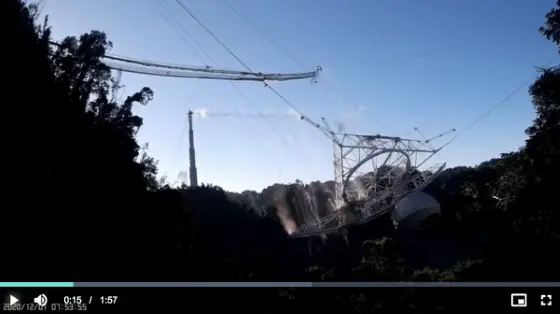
I just came across this terrifying video of 900 tons of steel falling about 500 feet to the ground. The first half of the video is from the ground. The second half is from a drone hovering over the steel cables as they stretch and fail. WATCH the entire short video. Pause the second half of the video every second to see the cables EXPLODE as they fail.
CLICK or TAP HERE to WATCH THE VIDEO and think about this the next time you cross a suspension bridge. You better hope your state DOT is doing their job making sure the cables are in great shape!
I’m in the process of scanning hundreds of old family photos to share with my relatives. I'm then uploading them to cloud storage so they're safe. Future generations will be able to look back at these digital images to see their ancestors.
CLICK or TAP HERE to see the bakery my grandfather and grandmother operated in Cincinnati, OH.
I’d guess this photo was shot in the early 1920s. My grandmother is the woman on the left in the white dress standing next to her oldest child, my Aunt Clara.
Scanning the photos is a fun project. You might consider scanning your old photos especially if you’re housebound this winter.
Mixed in with the photos, I’ve found some other treasures. My mother in her infinite wisdom, SAVED a copy of an ad that I’d put in everyone’s mailbox in my neighborhood. This would have been the summers of 1972 and 1973 when my good friend John Pendery and I painted houses. It was my first foray into entrepreneurship.
What’s FUNNY about this ad, looking at it now, is how much could I possibly have known about installing concrete, finishing drywall, and hanging wallpaper at that age? I was 20 or 21 for goodness sake!
It’s laughable! Keep that in mind when you hire an industrious but wet-behind-the-ears contractor!
Thanks, Mom for being a packrat!
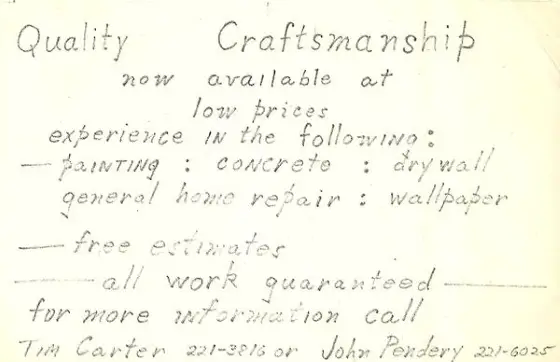
Do you want to get FREE BIDS from LOCAL contractors that have FAR MORE experience than I did when I walked around my neighborhood all those years ago?
CLICK or TAP HERE NOW to get FREE BIDS.
That’s quite enough for a lazy Sunday.
I’ll have lots of great revised columns for you on Wednesday.
Tim Carter
Founder - www.AsktheBuilder.com
Clean Organically - www.StainSolver.com
Morse Muff Time - www.W3ATB.com
P.S. What's 100X STRONGER than concrete? I’ll bet you don’t know the answer!!!!! CLICK or TAP HERE to see if you guessed wisely.
This is a perfect gift item for any number of people. Get several to see lots of your home.
CLICK or TAP HERE to discover MORE about this very cool device.
I hope your Thanksgiving was splendid. Mine was magical. The face time with family and the food were good for the soul. While it was cool and rainy on Mt. Desert Island Thanksgiving Day, the dry tongue of the weather system dragged its way across the island the following morning before we headed back to New Hampshire. I went for a quick hike along Ocean Path in Acadia National Park and this is some of the eye candy I got to enjoy.

You're looking across the water to the epic Sand Beach. There's a reason mariners call it the Deep Blue Sea. When ocean water is clear and free of silt, it mirrors the sky.
CLICK or TAP HERE to see a few of my favorite photos of the short hike. On warmer days, it's surreal to lay on the bare rock and feel the waves crash onto the shore.
Yes, it can be so powerful, it does shake the stone. They don't call Thunder Hole because it squeaks like a mouse. Check out the action below. The best wave is at 0:42.
There are some amazing videos in several of these revised columns. Believe me when I say you're making a mistake by not watching them.
SECRET to Lower New Home Costs - WOW - GREAT VIDEOS
What About Building Lot Sizes? Is Bigger Better?
Solid Brick Homes - CHECK THIS OUT! But Why?
Tim Carter
Founder - www.AsktheBuilder.com
Do It Right, Not Over
P.S. Sunday's newsletter is going to be a doozy. I've assembled LOTS of great information in it, including a scary factoid I'm sure you've never thought about. There's a KILLING DANGER surrounding you inside your home that you don't give a second thought to.
P.P.S. Are you shopping for Christmas gifts at Amazon? If so, you can HELP SUPPORT this newsletter by using my affiliate link when you start to shop. It costs you not a penny more to shop using my link. CLICK or TAP HERE to get started. Thank you for helping the newsletter thrive.
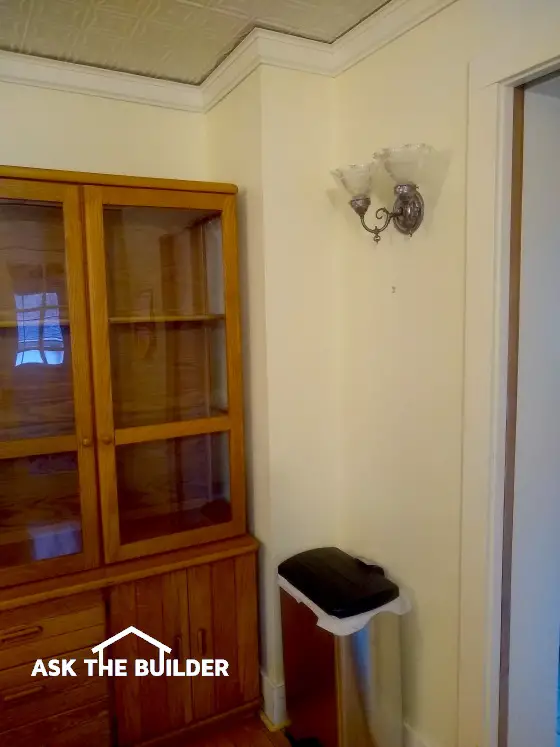
Hide Plumbing Pipes | This is a pipe chase. If you took off the plaster or drywall you’d see a 3 or 4-inch plumbing drain pipe and the hot and cold water lines going up to a second-floor bathroom. Copyright 2020 Tim Carter
QUESTION: Oh, Tim do I have a conundrum for you! A major remodel is about to happen here at my home and already we’ve got a problem. A new master bathroom is being created in a second-floor room but I can’t figure out how to get the drainpipe down to where it will connect to the rest of the plumbing drain pipes. How have you done this in the past on your jobs? But wait, there’s more! We need to get larger ductwork up to the second floor as well! Help me Tim Kenobi, you’re my only hope. Dawn J., Scranton, PA
You may have had similar challenges to Dawn’s. What’s interesting is these tough situations also present themselves in new homes too. I’ve been a master plumber since age 29 and each week I draw plumbing isometric and riser diagram plans for homeowners so they can get a plumbing permit. When I study their floor plans, I’m stunned to see many architects don’t think through how pipes need to get from one level to the next with as few bends as possible.
This is one reason I feel that architecture students should be required to have construction, not drawing, co-op jobs for half of the time they’re obtaining their degrees. I feel they need to work on actual job sites side-by-side with both carpenters, plumbers, and HVAC tradespeople. When these young fertile minds actually have to figure out how to make things work in the real world instead of on a computer monitor, their plans will be so much better in the future.
CLICK or TAP HERE for the BEST Quiet Plumbing Drain Pipes.
The architects of old often solved these issues with strategically placed walls, pantries, and closets on the level below where the bathroom would be. A wall on the lower level might be 6 inches thick for piping although 8 inches is far better.
CLICK or TAP HERE to get FREE BIDS from local carpenters that can build a pipe chase for you.
An architect might make one, or more, of the walls of a closet thick enough to accommodate the pipe or ducts. A false cavity can be created in the back of a closet by adding a second wall to the back of a closet. This cavity works well to get a large duct trunkline from one level to the next.
Corner pipe chases are also great ways to disguise pipes or ducts that have to go from one level to the next. To balance out the look in a room, you can always add a faux one in another corner. In the past, I’ve even built a long shelving unit that extends down from the ceiling about 16 inches that spans between the needed pipe chase and the faux one. All sorts of decorative items can be put up on the shelves and this takes your eye away from the pipe chases. The average person thinks the chases are needed to support the giant horizontal shelf.
It’s important for you to realize that you have some flexibility with the plumbing drain line. A typical residential bathroom with a toilet, shower, bathtub, and even two vanity sinks can be connected to one 3-inch pipe.
This pipe can run horizontally a significant distance, even up to 25 feet or more, before having to turn down to get to the next level. You can even have several 45-degree fittings in this horizontal run. Just be aware this pipe needs to slope 3/16ths inch for each foot of horizontal run so the liquids in the pipe don’t outrun the solids.
Knowing this, you may be able to extend the drainpipe to another room on the lower level away from the master bathroom above. The pipe chase might end up in the corner of some other room or even be inside a closet. It’s all a matter of how lucky you are with respect to the run of the floor joists below the new master bathroom.
CLICK or TAP HERE to get FREE BIDS from local carpenters that can build a pipe chase for you.
Be aware there are very strict building code requirements and structural best practices when it comes to creating holes in floor joists for pipes. Notching floor joists is never to be done as it weakens them. Holes drilled through floor joists need to be certain sizes and in very specific locations. The building code addresses these and there are quite a few helpful online guides you can reference.
If you’re using PVC or ABS plastic piping for the bathroom, be sure to install sound-deadening insulation around the pipes in both the ceiling and the vertical pipe chase once everything has been leak tested. The water flowing through and down the plastic pipes vibrates them with ease. This is why it sounds like a waterfall is in your walls if no insulation is present. You can eliminate this noise using no-hub cast iron drain pipes.
Your ductwork challenges are the same as for the plumbing drainpipe, only bigger. Ductwork is much larger than a plumbing stack and needs far more space. You may need to construct soffits in a room and disguise these creating a trayed ceiling in a room or two so the soffit doesn’t stick out like a sore thumb.
Column 1382

Water Hammer Fix | This is a large-diameter water manifold in my house. The smaller PEX lines are flexible. These are the two best things to use to fix water hammer when building a NEW home. To FIX water hammer in your existing home, look below for the EASY DIY repairs. The tips in the column below are so good I shared them with the 31,000 subscribers who read my April 4, 2021 and my December 6, 2020 FREE newsletter. Copyright 2020 Tim Carter
QUESTION: Tim, each time I shut off a faucet in my home my water pipes rattle and make a dreadful sound. It seems to me that they might burst from terrifying noise. The problem is common in many houses on my street as I’ve asked my neighbors if they have the same problem. What’s happening? Did the builder or plumber make a mistake when installing the pipes? Is there a danger of pipes bursting and flooding? Is there an easy fix, even DIY? Help before I need a life jacket! Pam H., Clearfield, PA
Do you suffer from loud crashing noises caused by water hammer? I used to at one of the first homes I lived in when I was in my early 20’s. At the time I didn’t think much of it and had yet to sit for my master plumber exam. I lived in an area where the city water main pressure was close to 80 pounds per square inch (PSI). The high water pressure was wonderful for showers and garden hoses, but the noise was a nuisance, especially when the electronic washing machine and dishwasher valves shut off.
If you dust off your high school physics textbook you’ll discover why water hammer is happening. First, water is a liquid and most are not compressible. Water is also pretty heavy. Stop for a moment and think of the velocity of water as it rushes out the end of your garden hose. That’s how fast, for the most part, the water is moving through your water lines.
Imagine if that water in the pipes instead was a tiny freight train chugging along. All of a sudden, right in front of the locomotive, a valve shuts off. The train crashes into the valve and the energy sends a huge pulse wave through the piping. The PSI within the system can spike to well over 180 PSI. You bet that can cause problems over time. A catastrophic leak is absolutely possible from countless shock waves.
The plumber who installed your piping could have prevented the water hammer by installing larger-diameter pipes within the system. Larger pipes, by their very nature, slow the velocity of the water moving through the pipes. All he would have had to do was extend 3/4-inch water lines to each fixture group and to critical fixtures like washing machines and dishwashers. These machines have electronic valves that slam shut when no more water is required.
STOP Water Hammer Pulse - CLICK or TAP HERE for more information.
PEX plumbing supply lines also could have helped. These flexible innovative plumbing water supply lines install much like electric cable and they can jiggle and move around to absorb the shockwave that pulses like a bomb going off in your water lines. Copper is rigid and you bet it can bang and shudder as you well know.
The good news is there are ways you can pretty much stop the water hammer within your home. If you possess moderate plumbing skills, it’s absolutely a DIY opportunity to get out your soldering torch and other tools.
I’d install two things to start: a spring-activated pressure reducing valve and one or two common expansion tanks. Both of these affordable accessories do a magnificent job of taming the wild stallions that are galloping through your water lines.
The pressure reducing valve can be adjusted by turning a screw. Be sure you pay attention to the direction of the water flow on the body of the valve. Most of the time this is installed just past the main shutoff valve for your home. While you have the water off, install a secondary main shutoff ball valve in case you have a wretched old gate valve. Ball valves allow for full flow and they’re usually trouble-free for decades.
Just after this new ball valve, consider installing a tee fitting that will allow you to put in a boiler drain so you can easily drain out all the water in your water lines. Many plumbers fail to install this simple accessory. I’d also install a second tee fitting in the main water line. This will allow you to install a water pressure gauge. You’ll never regret having one of these, trust me.
After you install all that, consider installing a three-gallon expansion tank. These are wonderful devices that have a rubber bladder within the tank. The bladder separates the water in the system from a bubble of air inside the tank. Be sure to install this tank according to the manufacturer's written installation instructions. Many require the threaded inlet to point UP, not down to the floor.
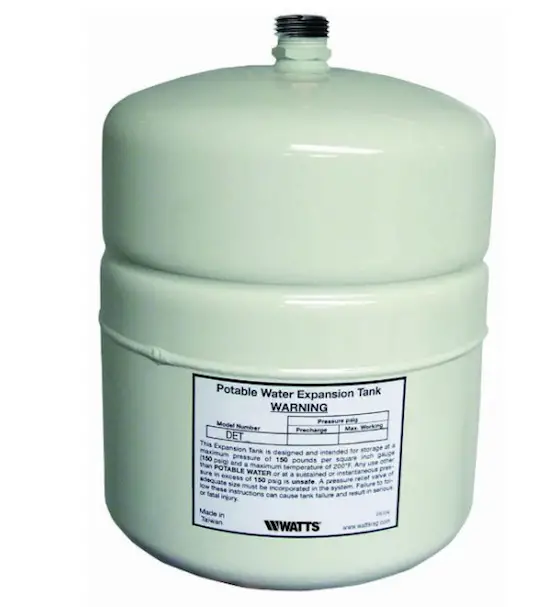
This is a good expansion tank. You can see how they connect at the top to the plumbing water pipe. CLICK on THE IMAGE NOW TO ORDER ONE.
The air bubble acts just like a shock absorber in your car or truck because air is compressible. These expansion tanks also do double duty protecting your storage water heater as heated water also needs a place to expand.
I know this seems like a lot of plumbing work, but it’s not. You can do all of this in an hour or less if you know what you’re doing. Just follow the plumbing code, best practices, and soon your home will be as quiet as a lamb.
Column 1381

Reinforcing Steel in Footings | Those gray bumpy rods are 1/2-inch steel reinforcing bars that will strengthen a garage footing. The contractor now needs to put supports under them so about 3 or 4 inches of concrete separates the rods from the soil. Then it’s time to pour concrete. Copyright 2020 Tim Carter
QUESTION: Tim, I’m flummoxed. I’m about to build a large detached garage. The plans call for a 10-inch-thick by 20-inch-wide poured concrete footing with two 1/2-inch steel bars that run continuously in the concrete. One bidding contractor says this steel is a waste of time and money while another suggests I upgrade to 5/8-inch steel reinforcing rods. Who’s right? What would you do? What does the steel do? How would you install it if this was your job? I don’t want to make a bad decision here. Sandra P., Ann Arbor, MI
It’s pretty easy to get flummoxed about countless things in residential construction. You can verify this by just reading all of the incoming questions I get on my Ask Tim page at AsktheBuilder.com. Not only do homeowners suffer from confusion, but I also see builders perplexed by all sorts of things. Less than two years ago, an insulation contractor with 20+ years of experienced admitted to me he had been installing insulation wrong his entire career once I pointed out his mistake. CLICK or TAP HERE to read this fascinating story about a contractor that ADMITTED his fault!
To understand the benefit of reinforcing steel in concrete, I feel you first need to grasp the physical properties of poured or cast concrete. Back in the mid-1990s, I was invited to an enlightening two-day editors conference hosted by the Portland Cement Association (PCA). From an educational standpoint, it was absolutely the best conference of my entire career.
I was the only member of the media in attendance that had any hands-on construction experience, but even still I discovered much about concrete and reinforcing steel I never knew before.
CLICK or TAP HERE to get FREE BIDS from local footing and foundation contractors.
It’s important to realize that concrete is artificial rock. It’s an extremely complex topic and entire books and careers have been devoted to just the science of concrete. But concrete shares something in common with most natural stone. When mixed and placed correctly, concrete is extremely strong in compression. It can take thousands of pounds of pressure per square inch to shatter or crack concrete.
But concrete only has about one-tenth the amount of strength in tension than it has when you compress or squeeze it. Tension is a bending force. Put a wood toothpick in your hands and snap it in half. That’s tension because you’re bending the wood until it fails. On a microscopic scale, however, one side of the toothpick is in tension as it’s stretching, but the other side is being compressed. This fact is important with respect to the placement of reinforcing steel.
Keep in mind that if you order 4,000 pounds-per-square-inch (PSI) concrete from the plant, that's its strength in compression. Understand it only takes 400 pounds of force to crack it when you subject the same concrete to a tension, or bending, force.
Steel is a magical building material, especially the round reinforcing steel rods you might discover on a construction site. These steel rods are easy to work with and they have incredible tensile strength. The average steel bar you’d find on a construction site might require 40,000 pounds of pulling force before you rip a piece of it in half! You can purchase steel reinforcing rods that even have a rating of 60,000 pounds!
At the PCA editors conference, the scientists demonstrated this. Prior to the conference, they had created some very small concrete beams that measured about 1.5-inches wide, 3/4-inch thick, and about 16-inches long if my memory is correct. One bar had no steel; and in the other one, they had put in two simple long pieces of coat hanger steel like you’d have in your closet. Both concrete bars had been created a month before the conference and had cured under perfect lab conditions. They were as strong as you could get them.
The scientists put the first bar on two pieces of 2x4 to simulate a miniature bridge. This bar had no steel. They then placed in the center of the span, a small 1 pound weight on it slowly and carefully. Within seconds the bar cracked and the bridge collapsed.
Next, they did the same with the bar that had the two coat hanger wires in it. They added one pound, then five more pounds in the center, then I think another five pounds and finally the bar had a significant bend in it, but it had not shattered. This is all you need to know as to why you should always put reinforcing steel in concrete.
The placement of the steel is very important. In a footing, you want the steel in the lower third or so of the concrete. If the footing fails because of poor soil, it’s going to want to stretch along the bottom of the footing while the top is being compressed. Thus, in Sandra’s footing, it would be wise to have about 3.5 inches of concrete under the steel bars.
This same practice should be followed for poured foundation walls. You’d want two rows of steel bars about one foot from the top of the wall and one foot from the bottom. Foundation walls can have tension happen both at the top and the bottom of the wall depending on where the soil below the long walls might fail.
It’s not a bad idea to upsize the steel to 5/8-inch, especially in the footing. The 1/2-inch bars would work just fine in a standard poured foundation wall. But no matter what, always default to what the plans say to do. If you have any questions, always reach out to a residential structural engineer for the answers. CLICK or TAP HERE to get a FREE QUOTE from one. An engineer is always my go-to source.
Column 1379
Subscribe to the FREE Ask the Builder newsletter to receive professional advice for your home. Complete the form below and each week you'll get:
Unsubscribe at any time. We respect your email privacy.